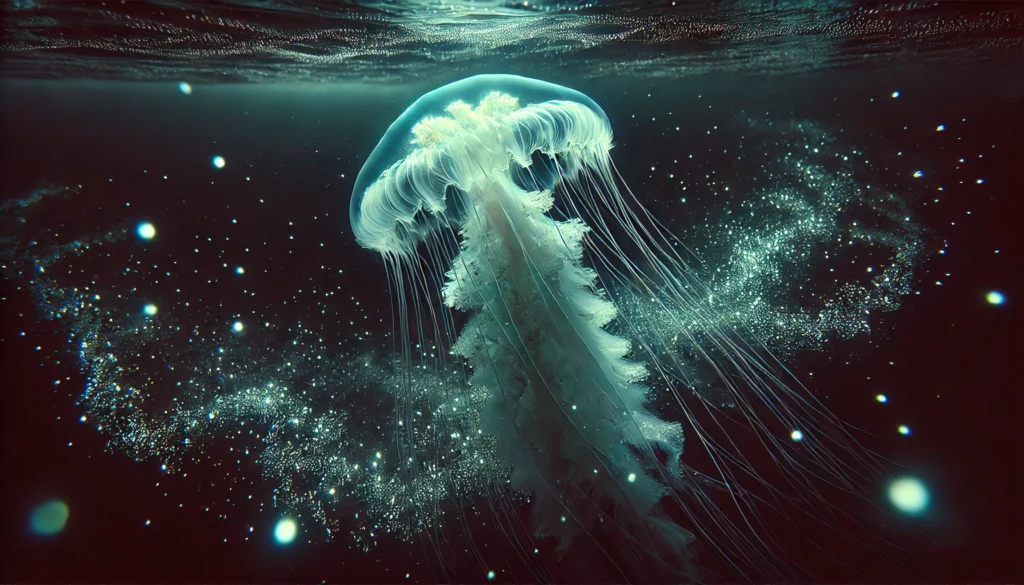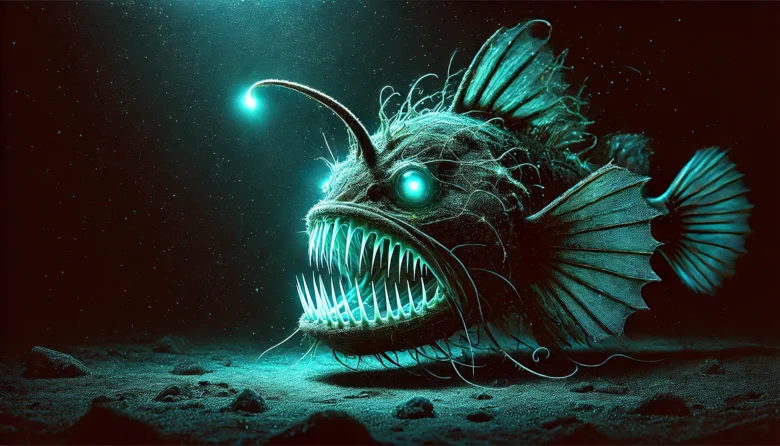Imagine diving deep into the ocean, where sunlight barely reaches. As the waters darken, suddenly, a flash of light appears—like a shimmering underwater firework. This mesmerizing display is bioluminescence. It’s a natural phenomenon where living organisms produce and emit light. Most commonly found in marine life, bioluminescence is not only fascinating but also highly functional. In this blog, we’ll explore the chemistry of bioluminescence in marine organisms, breaking down how it works and why it’s such an important tool for these creatures.
What is Bioluminescence?
Bioluminescence is the production and emission of light by living organisms. While many land-based organisms like fireflies use it, bioluminescence is most prevalent in marine environments, where nearly 90% of deep-sea creatures exhibit this ability.
The primary players in bioluminescence are two molecules: luciferin and luciferase. When luciferin reacts with oxygen in the presence of luciferase, it releases energy in the form of light. It’s a beautifully simple chemical reaction but one that has evolved into a survival mechanism for many marine organisms.
The Chemical Process Behind the Glow
The basic chemistry of bioluminescence involves the oxidation of luciferin. Here’s a simplified breakdown:
Luciferin: The molecule that produces light. When it interacts with oxygen, the reaction creates an excited intermediate compound.
Luciferase: This is an enzyme that catalyzes (speeds up) the reaction between luciferin and oxygen.
ATP (Adenosine Triphosphate): This molecule provides the energy needed for the reaction.
Oxygen: Oxygen is essential for the oxidation process, which triggers light emission.
Together, these components produce a visible glow, often in shades of blue and green, which are optimal for light travel underwater. The reaction can be spontaneous or controlled by the organism, depending on its needs.

Bioluminescence in Marine Creatures
Different marine organisms use bioluminescence for various purposes. Let’s dive into a few intriguing examples:
Anglerfish: The Underwater Lure
The anglerfish is one of the most iconic examples of bioluminescence in the deep sea. Female anglerfish have a bioluminescent lure that dangles from their head, attracting prey right into their jaws. The chemical reaction takes place in a symbiotic relationship with bioluminescent bacteria that reside in the lure.
Jellyfish: Lighting Up the Ocean
Some species of jellyfish, like the Aequorea victoria, produce stunning blue-green light thanks to a protein called GFP (Green Fluorescent Protein). This protein doesn’t emit light on its own but amplifies the bioluminescent glow from the reaction of luciferin and luciferase.
Dinoflagellates: Glowing Plankton
If you’ve ever seen the ocean glow when waves crash at night, you’ve witnessed bioluminescence in dinoflagellates. These tiny plankton emit light when disturbed, creating beautiful light trails. For them, bioluminescence may act as a defence mechanism, startling potential predators.
Why Do Marine Organisms Use Bioluminescence?
Bioluminescence serves various essential functions for marine organisms, ranging from predation to camouflage.
Defence Against Predators
For smaller creatures, like dinoflagellates, producing light when disturbed can startle and confuse predators. Similarly, squids and shrimp use bioluminescence to “cloak” themselves by matching the light from above, making them nearly invisible from below—a form of counter-illumination.
Attracting Prey
Just like the anglerfish, several marine predators use bioluminescence to lure in prey. Some fish have glowing appendages or light-producing organs (called photophores) that help them create attractive patterns, drawing in curious or unsuspecting prey.
Communication and Mating
Certain species use bioluminescence to signal mates. Fireflies on land flash their lights in specific patterns to attract partners, and some marine organisms do the same. The flashlight fish, for example, uses light to communicate in the dark depths of the ocean.
The Potential of Bioluminescence in Science and Technology
The chemical principles behind bioluminescence have far-reaching applications beyond the marine environment. Scientists have already leveraged the luciferin-luciferase reaction for a variety of biotechnological and medical purposes. For example, bioluminescent imaging helps researchers track cancer cells in real time, and bioluminescent markers allow scientists to study the movement of certain molecules in living cells.
Moreover, bioluminescence could inspire more sustainable lighting solutions. Imagine streetlights powered by bacteria that glow at night—a possibility scientists are currently exploring.
Conclusion
The chemistry of bioluminescence in marine organisms is a stunning example of nature’s ingenuity. From hunting to defense and even communication, the light-producing ability of these creatures helps them thrive in the dark, mysterious depths of the ocean. It’s fascinating to think how a simple chemical reaction can create such a vibrant and vital tool for survival.
As science continues to unlock the secrets of bioluminescence, we might soon see this natural phenomenon illuminating our own lives in innovative ways.
Author’s Note
Bioluminescence has always captured my imagination, and the more I learn about it, the more I’m amazed by the elegance of its chemistry. I hope this blog has sparked a little bit of that same wonder in you. The ocean’s depths hold countless mysteries, and bioluminescence is just one glowing thread in its intricate web of life.
G.C., Ecosociosphere contributor.
References and Further Reading
- The Science of Bioluminescence – National Geographic
- Which Insects Produce Light? – Pet Brilliant.com. https://petbrilliant.com/which-insects-produce-light/
- Exploring Bioluminescence: From Deep-Sea Creatures to Glowing Mushrooms | NewsTrack English 1. https://english.newstracklive.com/news/exploring-bioluminescence-from-deepsea-creatures-to-glowing-mushrooms-emc-sc54-nu384-ta384-1285304-1.html




